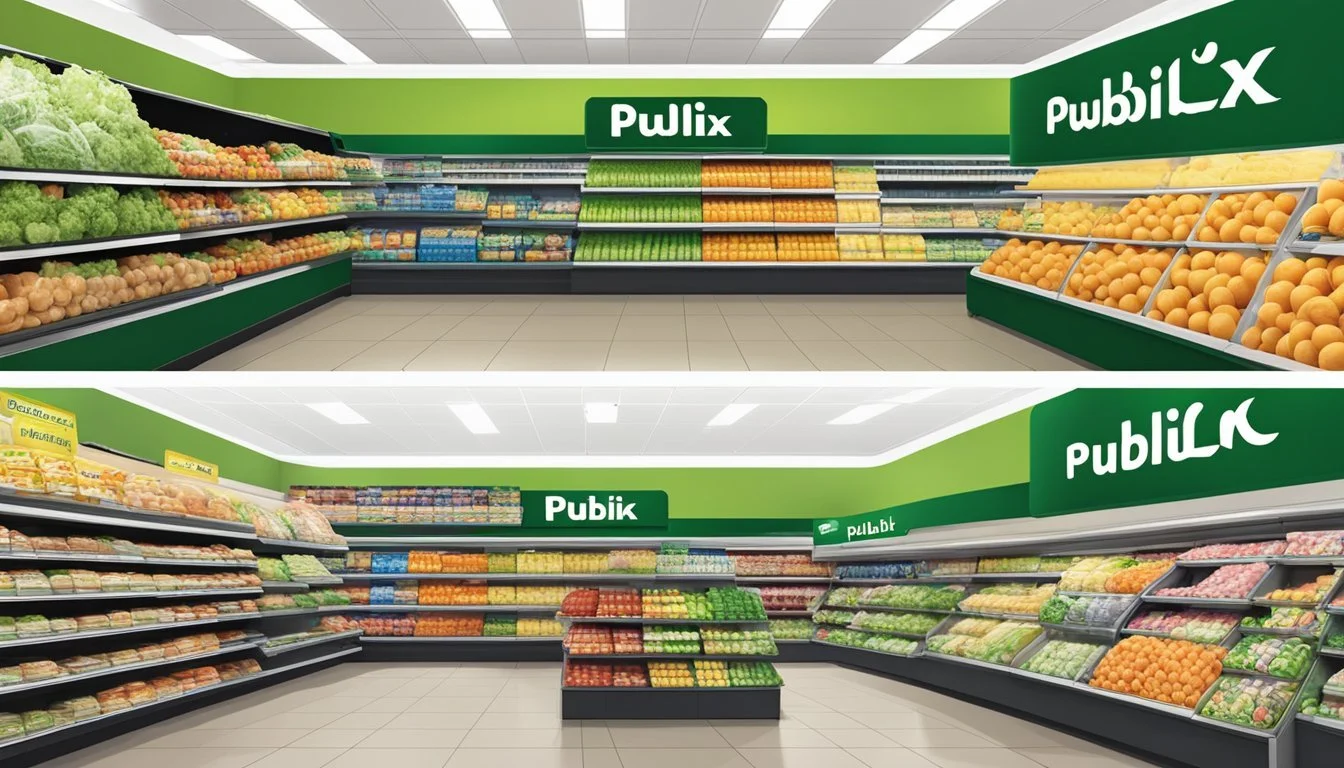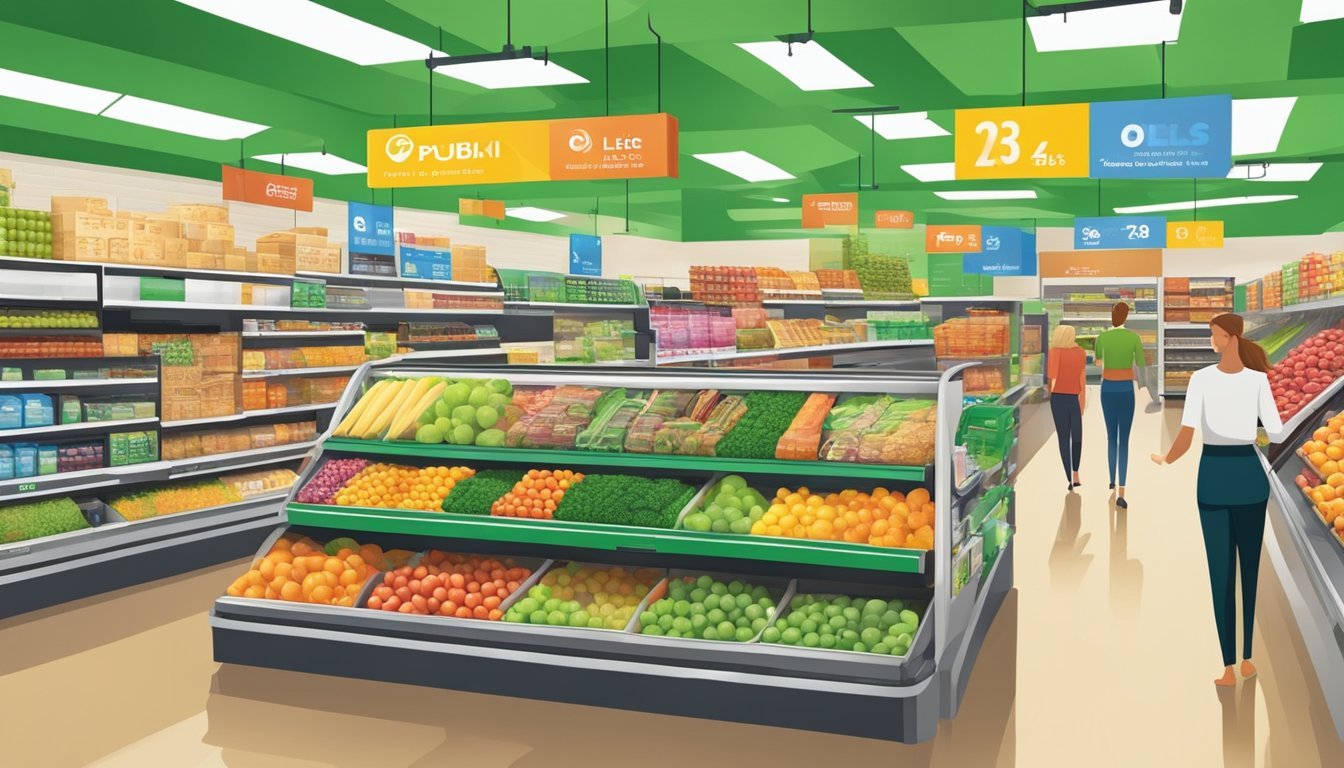Is Publix Cheaper Than Lidl?
Comparing Grocery Prices and Value
Part of Our Grocery Store Guide with Details on Publix Prices and Lidl Prices
When comparing grocery stores, price is often a major consideration for shoppers. Publix and Lidl represent two distinct options in the supermarket landscape with varying pricing strategies. Publix, a well-established chain in the United States, especially in the Southeast, prides itself on customer service and a pleasant shopping experience, factors that can influence their pricing. Lidl, a German discount supermarket chain, has been expanding in the U.S. and is known for its competitive prices and no-frills shopping environment.
Customers looking for the best value in their grocery shopping might observe that Lidl typically positions itself with lower prices on a range of products to attract budget-conscious consumers. In contrast, while Publix may have higher prices in comparison to discount grocers like Lidl, it often runs specials and offers Buy One Get One (BOGO) deals that might make shopping there more cost-effective, depending on the items and quantities purchased.
The comparison between Publix and Lidl is not solely about the bottom line; it encompasses the overall shopping experience, product selection, and brand promise. As grocery shoppers weigh their options, it's important to consider personal priorities, such as product quality, customer service, and shopping environment, alongside the pricing to determine which store offers the best value for their specific needs.
Overview of Grocery Store Landscape
The grocery store landscape features a diverse array of chains, each with unique selling propositions and pricing strategies that target different consumer segments.
Differentiating Factors of Supermarket Chains
Supermarket chains distinguish themselves through various factors including product selection, store layout, pricing, and customer service. Publix is known for its exceptional customer service and clean shopping environments, while Lidl offers a compact, no-frills shopping experience with a focus on efficiency and lower prices. Chains like Walmart and Kroger provide extensive product ranges and competitive pricing. In contrast, Whole Foods and The Fresh Market emphasize organic and high-quality products, often at premium pricing.
Price Comparison Relevance
Comparing prices between chains like Publix and Lidl is crucial for consumers looking to stretch their grocery budgets. Price is a primary consideration, as it directly affects the affordability of essential goods. Walmart is recognized for providing the best overall value, due in part to its large-scale operations and purchasing power. On the other hand, Aldi is a leading discount grocer known for its low prices, often surpassing the affordability of competitors such as Target and Trader Joe’s.
Role of Discount Grocers
Discount grocers, like Aldi and Lidl, play a significant role in the market by offering competitive pricing that challenges traditional supermarket chains. Their growing presence has prompted chains such as Publix, Harris Teeter, and Wegmans to respond with price adjustments and value offerings to retain their market share. The expansion of these discount chains continues to reshape the dynamics of the supermarket industry, directly influencing consumer shopping patterns and pricing strategies across the sector.
Comparing Publix and Lidl Pricing
When evaluating the pricing between Publix and Lidl, consumers will note that each supermarket offers different values across various categories. The following analysis breaks down the pricing structure by categories, gives a detailed comparison of grocery products, and assesses prices for fresh produce and deli items.
Price Analysis by Categories
Lidl generally positions itself as a low-cost grocery store, often undercutting competitors with its pricing strategy. In contrast, Publix might have higher price points but emphasizes quality, customer service, and a broader selection of goods. Consumers might find Publix to offer competitive pricing within the organic produce sector compared to other grocers but could see cost-savings on similar items at Lidl.
Grocery Products: Publix vs. Lidl
When it comes to dry goods and pantry staples, Lidl’s pricing often beats Publix. For instance, a standard bottle of ketchup may be cheaper at Lidl due to their focus on discount pricing. However, Publix could close this gap with frequent sales and BOGO (Buy One, Get One Free) offers, which can bring prices down substantially for selective items.
Lidl: Typically cheaper for pantry staples
Publix: Competitive with sales and BOGO deals
Fresh Produce and Deli Comparisons
Lidl’s low pricing trend typically extends to fresh produce and deli items; however, Publix may offer a wider variety of specialty and organic produce. Publix is known for its high-quality meats and deli products, although the prices can be higher, they also provide a larger selection. While Publix might have a higher price on ground beef, for example, customers can sometimes find better deals during promotional periods.
Produce and Deli:
Lidl: Generally lower prices
Publix: Higher quality with wider selection at a premium
Quality and Product Offerings
When comparing Publix and Lidl, one would notice the contrasting approaches these stores have towards quality and product offerings. From store brands to national labels, as well as fresh produce and organic selections, the difference is marked.
Store Brand Versus National Brands
Publix boasts a wide array of private label items, commonly known as the Publix brand, that often match the quality of national brands at a more competitive price. These items cover various categories allowing shoppers to stick to a budget while not compromising on quality. Lidl also offers a significant selection of store brands, which are competitively priced and present an alternative to higher-priced name-brand items. Both stores aim to provide quality options for those seeking to balance cost and brand preference.
Assessment of Freshness and Variety
Lidl and Publix stores both prioritize the freshness of their groceries. Publix has a reputation for a diverse range of fresh produce, meat, and bakery items, and often highlights the freshness and variety of their goods as a significant aspect of their stores. Lidl likewise ensures a vast selection of fresh products, though some customers might find variations in the assortment and availability when compared to Publix.
Availability of Organic and Specialty Items
The availability of organic and specialty items is an increasing demand among consumers, and both Publix and Lidl cater to this trend. Publix offers an extensive selection of organic goods, catering to various dietary requirements, and positions itself as a store where specialty items are readily available. Lidl similarly provides a myriad of organic options, often at lower price points, and includes European specialty items that differentiate its offerings from other grocery stores.
Consumer Experience Comparison
When comparing Publix and Lidl, consumers should consider the store layout and shopper convenience, the level of customer service and satisfaction, and the efficiency of the checkout process along with the overall shopping experience.
Store Layout and Shopper Convenience
Publix, with its locations primarily on the East Coast, boasts a store layout that prioritizes shopper convenience. Aisles are wide and well-organized, allowing customers to navigate the store with ease. Their produce section, bakery, dairy, and snack aisles are designed to be shopper-friendly, featuring a variety of high-quality options.
Lidl offers a more straightforward, no-frills shopping environment. The store layout is functional, focusing on providing a wide range of goods at competitive prices. Although less emphasis is placed on store aesthetics, Lidl's efficient design typically results in a quicker shopping trip for consumers.
Customer Service and Satisfaction
The employee-owned Publix has a loyal following due to its exceptional customer service. Shoppers often report high satisfaction with the attentive and friendly staff. The supermarket's commitment to customer service contributes significantly to its consumer experience.
Lidl, though newer to the U.S. market, has made strides in customer service. While the shopping experience may be different from Publix, Lidl’s focus on low prices does not come at the expense of customer care. Their staff is known for being efficient and helpful, ensuring customer needs are met.
Checkout Efficiency and Shopping Experience
At Publix, customers typically enjoy a pleasant checkout experience. The chain is known for its efficient service, with multiple lanes and staff available to minimize wait times. Shoppers appreciate the reliable and enjoyable experience, which is an integral part of Publix's reputation.
Lidl streamlines the checkout process by offering a less conventional system, where shoppers can bag their groceries at a designated area after paying, which can lead to a quicker exit from the store. This approach is aligned with Lidl's strategy to maintain low prices and pass on the savings to their customers.
Financial Considerations for Consumers
When consumers consider their grocery shopping options, they weigh the importance of saving on purchases against the quality and experience of the shopping environment. Cost-effectiveness, budget adherence, and the impact of discounts and recalls play vital roles in this financial assessment.
Budgeting for Grocery Shopping
Consumers setting out to manage their grocery expenses must first establish a budget. Pulses from surveys suggest that stores like Lidl attract shoppers with their competitive low prices, potentially offering a more affordable option for those trying to strictly adhere to their financial plans. On the other hand, Publix, while it may be considered a more expensive choice, often scores highly in customer satisfaction studies, indicating a trade-off between experience and expenditure.
Cost-Saving Tips
To save money, consumers are advised to stay informed about weekly sales and promotions. At Publix, sale prices can be 5% to 15% cheaper than other stores for select merchandise. Tips such as comparing unit prices, opting for store brands, and leveraging loyalty card benefits can lead to significant savings. Some shoppers strategize their purchasing of non-perishable items during these discounts to maximize stock for future use.
Impact of Discounts and Recalls
The effect of discounts is clear: they directly reduce the price of the purchased item. However, consumers should also be aware of product recalls, which can affect both the availability and safety of products on shelves. Staying informed about recalls not only helps in ensuring one's health and safety but could also prevent inadvertently buying items that may need to be returned at a later time, affecting one's budget and planned savings.
Conclusion
When comparing the costs between Publix and Lidl, shoppers often find distinct differences. Studies suggest that Lidl, as a discount grocery chain, typically offers lower prices on a range of grocery items. This may make Lidl the more cost-effective choice for customers looking to stretch their budget.
On the other side, Publix tends to emphasize the shopping experience and customer satisfaction, which are valued by its loyal patronage. The store is frequently recognized for their wide variety of options and higher-end product selection. Customers who prioritize these aspects might prefer Publix despite potentially higher prices.
Therefore, the decision between the two grocery stores does not rest solely on pricing. Other factors, like store experience, product selection, and location, can also play significant roles for customers.
For price-conscious customers:
Lidl is often the favorite option due to its cost savings.
For those valuing experience and selection:
Publix may be the preferable market despite being less economical.








